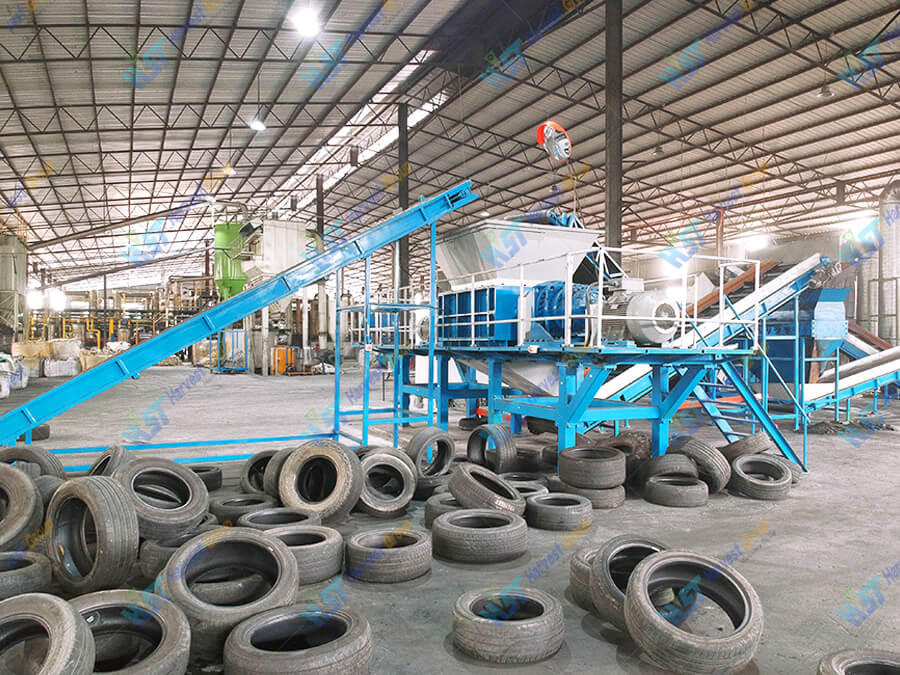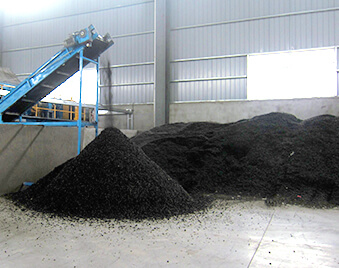Waste tires pose a significant environmental problem due to their non-biodegradable nature, large volume, and flammability. According to data from the U.S. Environmental Protection Agency, approximately 300 million tires are discarded annually in the United States alone, with only about 15% being recycled. The remaining tires are either sent to landfills, illegally dumped, or incinerated for energy recovery, which inevitably leads to air pollution and greenhouse gas emissions.
Overall, tire burning is considered an unsustainable and potentially hazardous method of waste tire disposal. It poses numerous environmental threats and various risks to public health. However, in certain circumstances, burning tires can also help manage this type of waste to some extent. This article will delve into the risks associated with tire burning and explore alternative disposal options for the 1.5 billion discarded tires produced globally each year.

The air pollution caused by tire burning kilns is extremely significant. Burning tires releases large amounts of toxic pollutants into the air, including sulfur dioxide (SO2), nitrogen oxides (NOx), carbon monoxide (CO), volatile organic compounds (VOCs), and particulate matter (PM), including fine particulate matter known as PM2.5. The heavy metals and other harmful pollutants contained in these black fumes can linger in the air for extended periods, potentially causing health hazards ranging from acute to chronic.
Ash generated from tire burning may contain toxic substances that can contaminate nearby soil and water bodies. When tire ash settles on the ground or is washed away by rain, the pollutants may seep into the soil and water, causing contamination of the soil and water environment.
Burning tires produces dioxins and furans, which are released into the air. Human exposure to dioxins may lead to reproductive issues, suppressed immune systems, and increased cancer risks.
Dioxins also accumulate in sediments and are ingested by fish or other aquatic organisms. They accumulate in the food chain, not only causing cancer in animals but also potentially affecting humans who consume contaminated fish or poultry. The World Health Organization has classified dioxins as the most severe known human carcinogens.
Additionally, emissions from burning tires contain a range of harmful substances, such as heavy metals (lead, cadmium, mercury, etc.) and polycyclic aromatic hydrocarbons (PAHs). These pollutants are known to be carcinogenic and can have adverse effects on the respiratory system, cardiovascular system, and reproductive system. Long-term exposure to emissions from burning tires increases the risk of respiratory diseases, including asthma, bronchitis, and even lung cancer.
Emissions from open-air tire burning include “standard” pollutants such as particulate matter, carbon monoxide (CO), sulfur oxides (SOx), nitrogen oxides (NOx), and volatile organic compounds (VOCs).
Additionally, they include “non-standard” hazardous air pollutants (HAPs), such as polycyclic aromatic hydrocarbons (PAHs), dioxins, furans, hydrogen chloride, benzene, polychlorinated biphenyls (PCBs), and metals like cadmium, nickel, zinc, mercury, chromium, and vanadium.
Both standard and non-standard pollutants can cause serious short-term and long-term health effects. Depending on the duration and extent of exposure, these health effects may include skin, eye, and mucous membrane irritation, respiratory system effects, central nervous system suppression, and cancer. The U.S. Environmental Protection Agency (EPA) recommends avoiding exposure to these emissions without protection.
Additionally, evidence suggests that the mutagenicity (i.e., the ability to induce genetic mutations) of uncontrolled tire burning is 16 times higher than that of traditional residential wood-burning fireplaces and 13,000 times higher than that of emissions from coal-fired power plants with good combustion efficiency and additional control measures.
Particularly concerning is the fact that children living in these communities may inadvertently be exposed to these pollutants. Populations such as children, fetuses, breastfeeding infants, the elderly, asthma patients, and immunocompromised individuals are more sensitive to pollutants released from burning tires.
Even pollutants inhaled by breastfeeding women can be transmitted to infants through fats in breast milk. During breastfeeding, infants are exposed to higher concentrations of organic pollutants than at any other time in their lives. Burning tires only exacerbates this toxic burden.
The pollutants released from burning tires can exacerbate environmental degradation and harm ecosystems. Their environmental impacts may include: damaging plant life, affecting aquatic organisms, destroying surrounding habitats, and disrupting ecological balance.
Burning tires can also trigger intense and uncontrollable tire fires. These fires produce dense smoke, posing significant challenges for firefighting efforts. Some tire fires can burn for up to 15 years, during which time they continue to spread pollutants and harmful substances.
Negative impacts on communities and the economy: A double blow to living standards and development
The odor from burning tires is extremely unpleasant, causing discomfort for residents in surrounding communities, reducing property values, damaging the reputation of nearby areas, and ultimately impacting the development of local tourism.
Environmental alternatives: The advantages of tire recycling

Adopting appropriate waste management methods, such as tire recycling and reuse, is crucial to reducing the need for burning as a tire disposal method. Tire recycling is a safe and environmentally friendly solution for handling old tires accumulated in homes or yards.
The Process and Products of Tire Recycling: The Magical Transformation of Turning Waste into Treasure

At tire recycling plants, these discarded tires undergo processing, with their materials reused to create valuable new products. Through rubber tire shredders, recycled tires can be transformed into playground surfaces, road asphalt, and even new tire products.
Tire recycling offers numerous benefits, including preventing tires from entering landfills or being burned, thereby reducing environmental pollution. The recycling process also conserves natural resources, reduces waste, and lowers greenhouse gas emissions, contributing to overall environmental sustainability.
Tire recycling reduces waste, lowers pollutant emissions, and minimizes the risks associated with improper tire disposal. By reusing tires, recycling provides a practical and environmentally friendly solution.
The dangers of burning tires are alarming, ranging from immediate respiratory issues to long-term risks like cancer. The dense toxic smoke released when tires are burned not only harms human health but also exacerbates environmental problems.
Given these significant risks, we must all make safer and more responsible choices when it comes to disposing of used tires. Recycling old tires is crucial for protecting our health and the planet.
Choosing to recycle tires is a commitment to a healthier planet and a safer future. Through this approach, we can reduce environmental pollution and protect communities from the harmful effects of tire burning.
Let us seize this opportunity to embrace innovation, foster collaboration, and bring positive change for the Earth and future generations. By working together, we can turn challenges into opportunities and pave the way for a sustainable future.